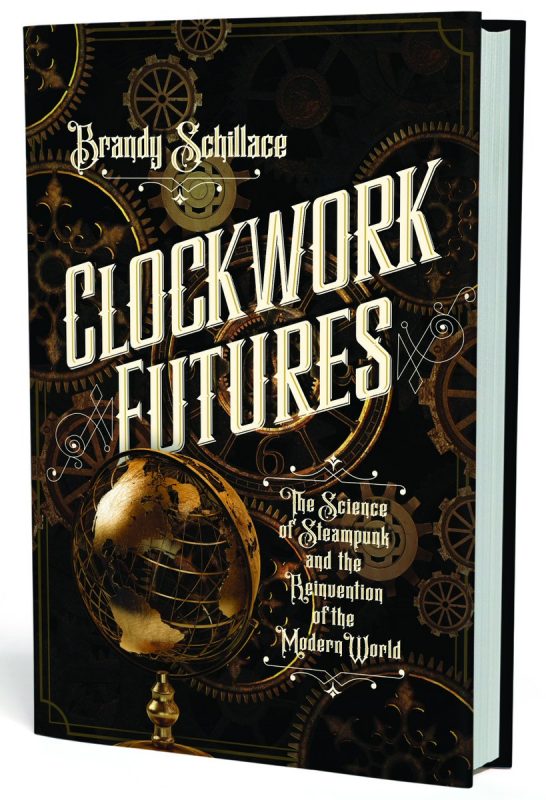The real world is full of fascination and wonder, so I’m not a huge fiction reader. There’s always more to discover. At the same time, there’s a visceral appeal to the neo-Victorian aesthetic of cogs, gears and tubes. Brandy Schillace’s Clockwork Futures exposes the inner working of nineteenth century science. She gives us steampunk non-fiction. Schillace presents a history of physical science as viewed through a steampunk lens. It’s a thoroughly literary work that offers the reader education, inspiration and perspective.
Clockwork Futures tells its story through the reconciliation and reaffirmation of opposites. It’s structured in five parts: Chaos and Order, Darkness and Light, Privation and Industry, Anarchy and Control, and Death and Immortality. Although I pointed out that the focus is on nineteenth century science, its predecessors drive it. Mathematicians and astronomers like Galileo and Newton lay the foundation for the science. References to literary works like Mary Shelley’s Frankenstein illuminate the cultural perspectives that equally develop the context of how scientific advances come about. New thoughts are encouraged or stifled almost on whim. An argument could be made that many advancements have been based on rivalries of who was in or out of the Royal Society (aka The President, Council of the Royal Society of London for Improving Natural Knowledge), itself a reflection of the inclusion and exclusion of knowledge.
In a broad way, the book serves as an educational text. It’s full of facts. As a literary work, it assembles these into a story. Today, we distill much of this into the steampunk aesthetic. Genius heroes and heroines battle mad scientists and save the world from dominion. Schillace shows us the historical figures, engineers and inventors, who developed the models for these protagonists, and the villainous conditions they rescue us from. Where would we be without Babbage’s thinking machines or Tesla’s electric devices? Or the malevolent masterminds whose lust for power Engels and Marx examined? We learn about technological strides and who develop them.
These figures also serve as inspiration. Historically, one development leads to another. The book reveals the connections. At the same time, they can serve as models in steampunk culture. Sure, we see plenty of Nicola Teslas and Sherlock Holmeses inserted into costumes and fiction, but battery inventor Robert Bunsen deserves notice too. Read the book.
In reviewing her tale, Schillace points out the need for balance. She quotes Paul Virilio from Pure War, 1997, “The invention of the steam engine and locomotive was the invention of derailments.” New technologies lead to new benefits and new disasters. In the Clockwork Futures narrative, we see both. One does not exclude the other, but can be seen as part of the larger story. It’s up to us to keep an eye on how the story develops.
Pegasus Books publishes Clockwork Futures on September 5, 2017.


There are no voices yet... Post-script us a message below, won't you?